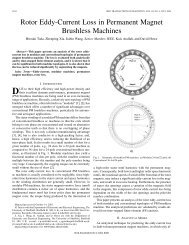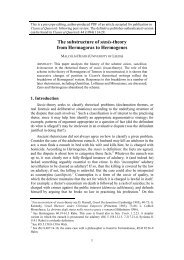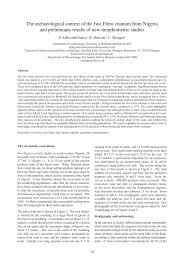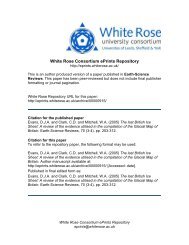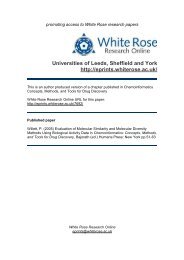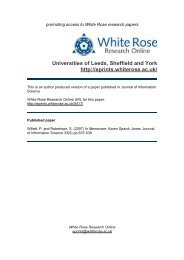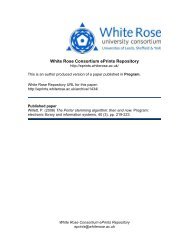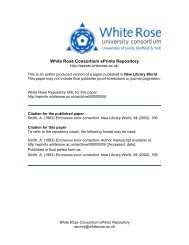The last British Ice Sheet: A review of the evidence utilised in the ...
The last British Ice Sheet: A review of the evidence utilised in the ...
The last British Ice Sheet: A review of the evidence utilised in the ...
Create successful ePaper yourself
Turn your PDF publications into a flip-book with our unique Google optimized e-Paper software.
Fig. 5 (b) Map <strong>of</strong> l<strong>in</strong>ear ridges based upon DEM <strong>in</strong> (a) (Thomson, 2003). Ridges are coded accord<strong>in</strong>g to <strong>the</strong> type <strong>of</strong> sediment cover<br />
<strong>The</strong> westernmost penetration by North Sea glacier ice up <strong>the</strong> Humber estuary is marked by <strong>the</strong> Horkstow<br />
Mora<strong>in</strong>e which extends from <strong>the</strong> Horkstow area across <strong>the</strong> estuary to Brough. This limit corresponds with <strong>the</strong><br />
westernmost limits <strong>of</strong> <strong>the</strong> Skipsea (Hessle) Till (e.g. Suggate and West, 1959; Gaunt et al., 1992) and has<br />
been associated with <strong>the</strong> Stickney Mora<strong>in</strong>e and <strong>the</strong> Lower Marsh Till <strong>of</strong> L<strong>in</strong>colnshire by Straw (1979). Straw<br />
also suggested that glacial lakes Humber and Fenland were dammed by this ice marg<strong>in</strong>. Gaunt (1981)<br />
referred to <strong>the</strong> Horkstow Mora<strong>in</strong>e as a hummocky mora<strong>in</strong>e <strong>of</strong> Skipsea type till ly<strong>in</strong>g <strong>in</strong> <strong>the</strong> area between<br />
Brough, W<strong>in</strong>ter<strong>in</strong>gham, W<strong>in</strong>terton and Horkstow. He fur<strong>the</strong>r suggested that ano<strong>the</strong>r mora<strong>in</strong>e ridge between<br />
North and South Ferriby, which is associated with <strong>in</strong>terbedded till and lacustr<strong>in</strong>e deposits, was a stabilization<br />
po<strong>in</strong>t for <strong>the</strong> ice as it receded back out <strong>of</strong> <strong>the</strong> Humber estuary. <strong>The</strong> fur<strong>the</strong>st extent <strong>of</strong> <strong>the</strong> Vale <strong>of</strong> York lobe has<br />
been mapped at Wroot <strong>in</strong> <strong>the</strong> Isle <strong>of</strong> Axholme based upon <strong>the</strong> sou<strong>the</strong>rn limit <strong>of</strong> <strong>the</strong> elongate cha<strong>in</strong> <strong>of</strong><br />
“Younger Glacial Sand and Gravel” by Gaunt (1976) and between Doncaster and Ga<strong>in</strong>sborough by Palmer<br />
(1966). This was regarded as <strong>the</strong> limit <strong>of</strong> a surge <strong>in</strong>to Lake Humber by Gaunt (1981).<br />
Glacial Lake Humber was l<strong>in</strong>ked to Glacial Lake Fenland at <strong>the</strong> time <strong>of</strong> <strong>the</strong> surge to Wroot (Gaunt, 1981)<br />
at an elevation <strong>of</strong> 30–33 m through <strong>the</strong> L<strong>in</strong>coln gap (Lewis, 1887, 1894; Melmore, 1935; Straw, 1963; Palmer,<br />
24




